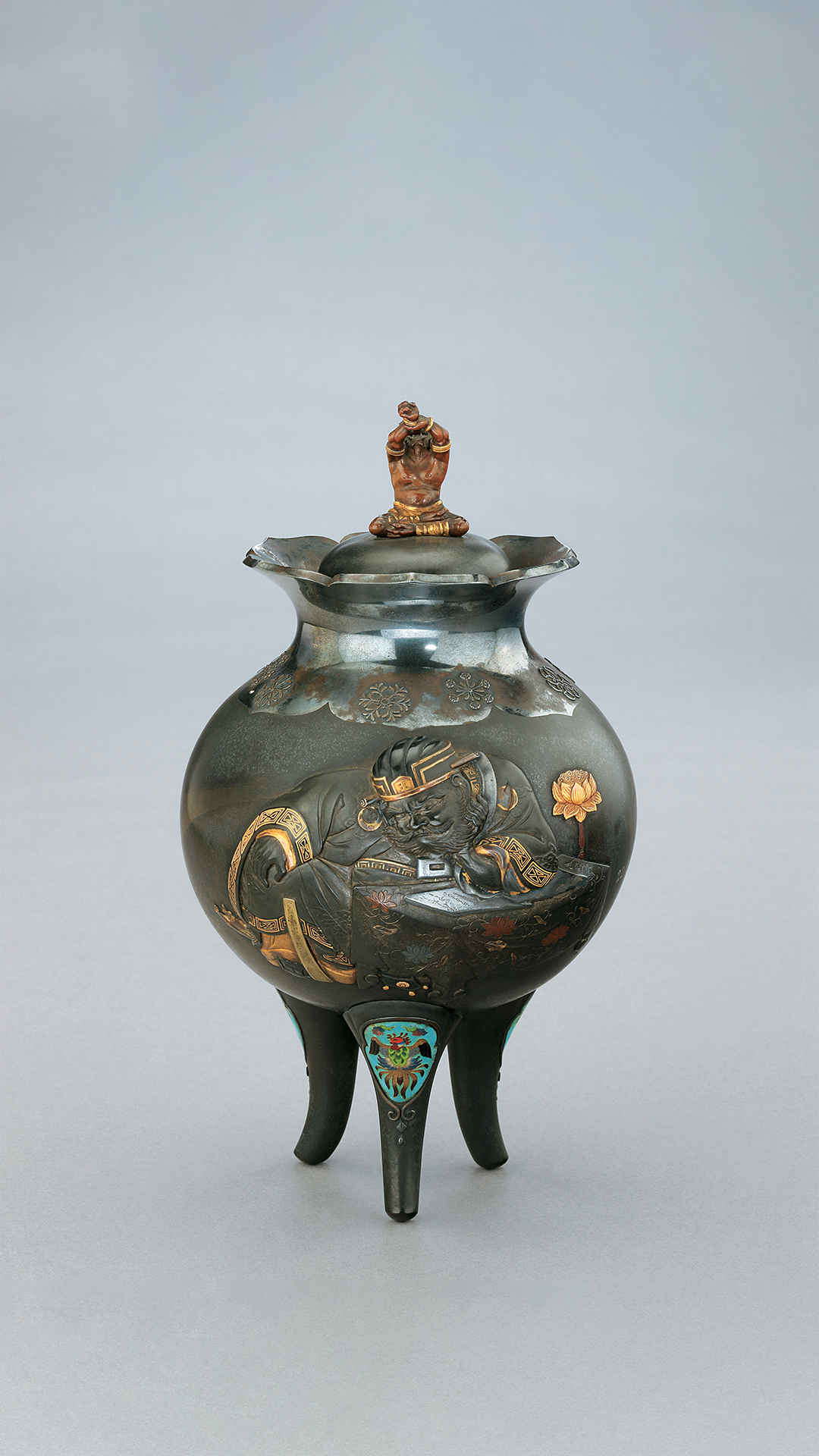Vase in the form of an Incense Burner
Description
Mark: seal “Takasaki”; carved inscription Bokusui hen, Inshi koku
This is a superb example of the collaboration among craftsmen of the Meiji period. The body is of shibuichi, an alloy of copper and silver, with applied and carved decoration showing Emma-O, the Buddhist King of Hell, dreaming of a procession of courtesans, a humorous moralistic theme which often appears on the metalwork of this period. The dreaming deity is carved in high relief with details in applied copper, shakudo (an alloy of copper and gold which patinates to a luxurious black colour), and gold; the procession of the courtesans and her attendants on the reverse of the incense burner is executed in a similar technique. Exquisite panels of cloisonné enamel on the three legs are possibly the work of Hiratsuka Mohei or Goto Shozaburo, both of whom won prizes for their work. The finial is in the form of a humorous Oni, an ambivalent Buddhist demon, in patinated and gilt copper.
The vase was probably produced to order by the Ozeki Export Company of Yokohama who exhibited work at the First National Industrial Exposition in 1877 where they won prizes. Yamada Motonobu (1847–97), who used the art name “Inshi”, came from a family who had served as retainers to the Mito branch of the Tokugawa family. Besides receiving commissioned work from the Ozeki company, Motonobu, who moved to Edo around 1872, is also recorded as having served the imperial household in 1877.
Sir Ratan Tata Art Collection
Collection
Japanese Art
Artist
Yamada Motonobu
Object Type
Vase
Material
Patinated copper alloy with cast and hammered decoration, and applied cloisonné enamels
Schools/Culture/Period
Meiji period
Technique
Cloisonné
Date
c. 1885–90
Location
Japan
Dimension
Height 21.5 cm
